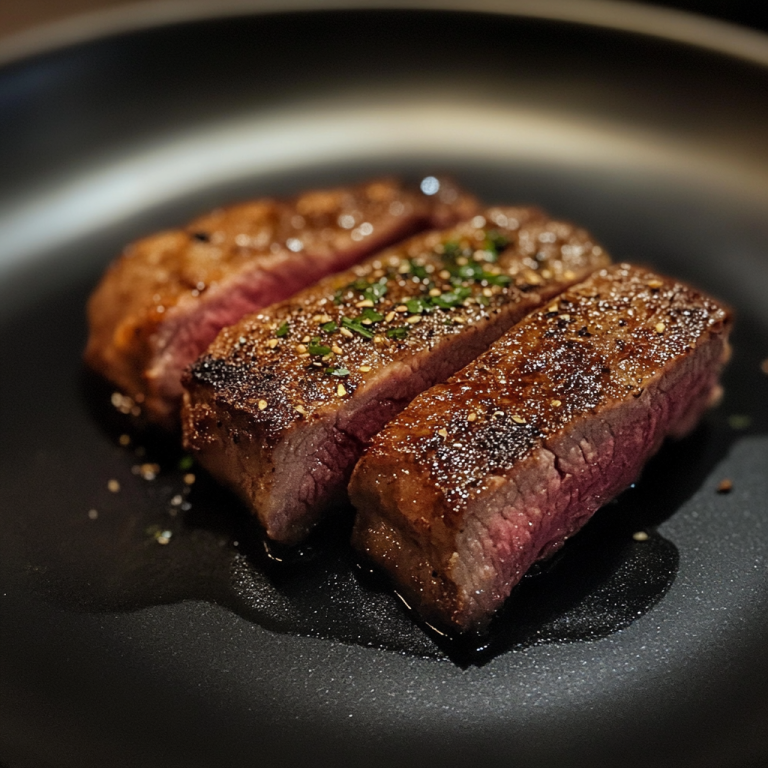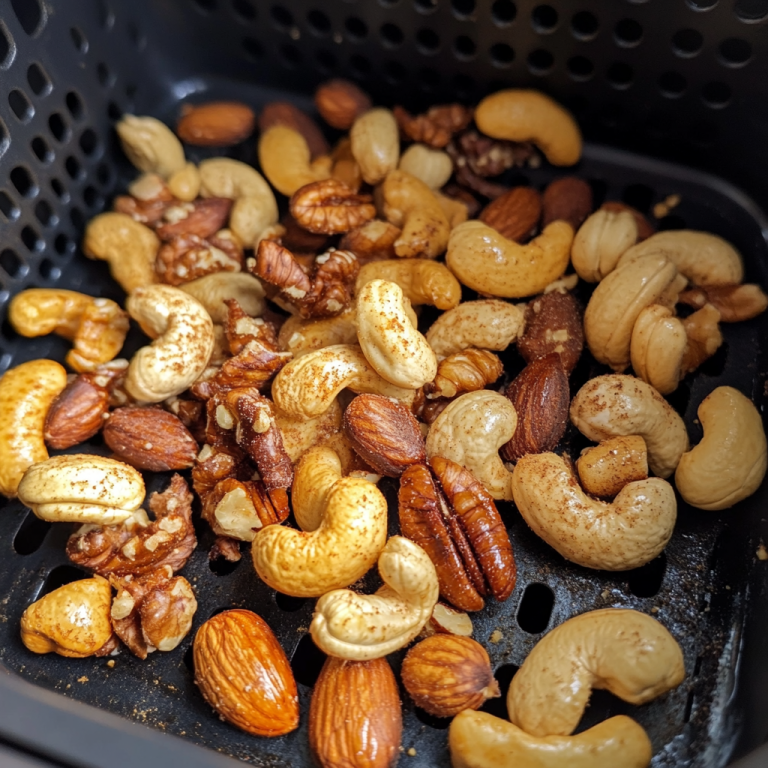Air Fryer Temperature For Reheating: Quick Guide
Reheating leftovers can often be a hit or miss, but using an air fryer can elevate your meal prep game. This article explores the ins and outs of air fryer reheating, showcasing its advantages over traditional methods like microwaving. It covers recommended temperatures for various foods, tips for ensuring meals come out perfectly, and common mistakes to avoid. Discover a healthier, more delicious way to enjoy your favourite dishes!
What is Air Fryer Reheating?
Air fryer reheating is a cooking technique that employs hot air circulation to evenly heat food, providing a convenient and rapid solution for reviving leftovers, frozen foods, and snacks while preserving an ideal texture and crispness. This appliance can effectively supplant traditional reheating methods by allowing for precise adjustments in temperature settings and cooking duration, resulting in reheated meals that taste as if they were freshly prepared. Familiarity with the air fryer s user manual is essential for optimising its features for various food types, thereby enhancing the overall user experience. When utilising this innovative appliance, users can experience significant advantages over conventional reheating methods, such as microwaves, which often yield food that is soggy or unevenly heated. The efficient air circulation technology inherent in air fryers ensures that meals are heated thoroughly and uniformly, restoring their original flavours and crispy finishes. This approach not only enhances the visual appeal of the food but also improves its aroma, contributing to a more satisfying eating experience. By incorporating the air fryer into their cooking repertoire, individuals can seamlessly elevate their meal preparations, making reheating both efficient and enjoyable.
Benefits of Reheating with an Air Fryer
Reheating meals with an air fryer presents numerous advantages, contributing to its popularity as a kitchen appliance. This device is particularly effective in delivering a crispy texture to foods without the need for excessive oil, positioning it as a healthier alternative for those who enjoy fried foods. Furthermore, air fryers are recognised for their energy efficiency and rapid cooking times, enabling users to quickly reheat snacks and leftovers while also exploring various cooking techniques.
Healthier Option than Microwave Reheating
Utilising an air fryer for reheating food is a healthier alternative to microwave reheating, as it not only enhances flavour but also preserves the food’s moisture and texture, resulting in enjoyable and satisfying meals. While microwaves often render food soggy and unevenly heated, air fryers circulate hot air to achieve a crispy finish across various food types, thereby improving overall meal quality. This method not only preserves essential nutrients but also introduces a delightful crunch, enhancing the overall dining experience. For those who prioritise health, the air fryer stands out by significantly reducing the amount of oil required, allowing for lighter, guilt-free meals. In contrast, microwaves can contribute to nutrient loss and frequently result in unappealing reheated leftovers. By opting for an air fryer when reheating, users can enjoy meals that taste freshly prepared and retain their original flavours, making it an excellent choice for both health-conscious individuals and culinary enthusiasts.
Recommended Temperatures for Reheating Different Foods
Proper temperature settings are essential for effectively reheating various types of food in an air fryer. This practice ensures that meals are heated evenly while preserving their intended flavour and texture. Different foods necessitate specific cooking temperatures and time adjustments; for example, meats and proteins typically require higher settings to achieve thorough reheating, whereas baked goods may benefit from lower temperatures to prevent overcooking.
Meats and Proteins
When reheating meats and proteins in an air fryer, it is essential to select the appropriate cooking temperature and duration to ensure that the food attains a safe internal temperature while achieving a desirable crispy finish. Typically, chicken and beef should be reheated at approximately 175 C for a period of 10 to 15 minutes, which facilitates even heat distribution and moisture retention. For denser proteins such as pork or lamb, a slightly higher temperature of 190 C for 12 to 18 minutes may be more suitable to ensure thorough reheating while preserving their juiciness. In contrast, fish fillets are prone to drying out, so a lower temperature of 160 C for around 8 to 10 minutes is advisable. It is crucial to ensure that the internal temperatures of meats reach at least 74 C, as this not only maintains meal consistency but also complies with food safety guidelines, thereby mitigating the risk of foodborne illnesses. Utilising a meat thermometer can serve as a reliable method to verify that these optimal reheating practices are adhered to across various types of proteins.
Replacement Straw Compatible with Stanley 40 oz 30 oz Cup Tumbler, 6 Pack Reusable Straw with Cleaning Brush, Plastic, Clear
$5.99 (as of 21:21 GMT +00:00 - More info)Vegetables and Grains
Reheating vegetables and grains in an air fryer necessitates specific temperature adjustments to preserve food quality and moisture retention while facilitating efficient reheating. Ideally, vegetables should be heated at approximately 150 C for about 5 to 8 minutes to maintain their texture and flavour, thereby preventing overcooking and loss of nutritional value. For grains, a slightly lower temperature of around 120 C is generally recommended, with cooking times ranging from 6 to 10 minutes, depending on the type and moisture content. Utilising air fryers not only streamlines the reheating process but also enhances the overall taste by promoting even heat distribution. Covering the food lightly with foil can effectively trap steam, ensuring that the grains remain fluffy while preventing them from drying out. By adopting these best practices, individuals can significantly improve the quality of previously cooked vegetables and grains, thereby revitalising their meals.
Baked Goods and Leftovers
When reheating baked goods and leftovers, such as pizza, it is essential to implement appropriate cooking adjustments to achieve a desirable crispy finish. An air fryer can effectively rejuvenate baked items by reheating them at approximately 160 C for about 5 to 10 minutes. This method allows the outer layers to regain their crispiness while ensuring that the interior is adequately warmed. For items like pastries and breads, utilising a conventional oven set to 180 C can yield excellent results, typically requiring about 10 to 15 minutes to restore their appealing texture. When reheating pasta or casseroles, it is advisable to place them in a microwave-safe dish with a small amount of water and cover them to retain moisture. Heating for approximately 2 to 3 minutes on medium power should be sufficient. By employing these techniques, one can effectively repurpose previous meals, ensuring that each bite remains as enjoyable as when first prepared.
Tips for Successful Air Fryer Reheating
To achieve successful reheating in an air fryer, it is essential to adhere to specific guidelines, including appropriate cooking adjustments, precise timing, and accurate temperature settings. These factors collectively enhance the overall user experience. Furthermore, familiarising oneself with the nuances of the air fryer s features can facilitate the clean-up process and contribute to a more gratifying cooking experience.
Proper Storage and Preparation
Proper food storage and preparation are essential factors that significantly impact the success of reheating meals in an air fryer, ensuring compliance with food safety standards while maintaining quality. Storing leftovers in airtight containers and allowing them to reach room temperature prior to reheating considerably enhances the effectiveness of the cooking methods employed in the air fryer. A comprehensive understanding of the characteristics of various food types can yield substantial improvements; for example, separating proteins from carbohydrates can lead to more uniform heating. Additionally, using parchment paper can prevent sticking and ensure a crisp texture, thereby enriching the culinary experience. It is equally important to label and date meals to prevent the consumption of food that may have surpassed its safe storage duration. These straightforward culinary strategies not only contribute to optimal reheating outcomes but also promote safer practices that protect health while providing a satisfying dining experience.
Timing and Temperature Adjustments
Understanding the appropriate timing and temperature adjustments required for various foods is crucial for optimal reheating in an air fryer, as these factors directly influence the texture and flavour of the food. For instance, thicker cuts of meat may necessitate longer cooking times and higher temperature settings to achieve thorough heating without compromising quality. Conversely, more delicate items, such as pastries or leftovers with sauces, require lower temperatures and shorter reheating durations to avoid drying out or losing their original characteristics. Employing techniques such as flipping items halfway through the reheating process can promote even cooking, while careful monitoring ensures efficiency without sacrificing taste. Mastering these nuanced adjustments can significantly enhance the culinary experience, transforming reheated meals into delightful dishes that retain their original appeal and moisture. This method not only amplifies flavours but also preserves the integrity of the ingredients utilised.
Common Mistakes to Avoid
Avoiding common mistakes during the reheating process in an air fryer is crucial for maintaining both the quality and safety of the meal, thereby ensuring a satisfying culinary experience. Frequent pitfalls such as overcooking and undercooking often arise from improper temperature settings and timing, which can result in food that is either dry or inadequately heated.
Overcooking and Undercooking
Overcooking and undercooking are two significant challenges when reheating food in an air fryer, as they can adversely affect the quality of the meals. To mitigate these issues, it is essential to monitor cooking temperatures and adjust timing according to the specific type of food being reheated, thereby ensuring optimal results. Striking the right balance between achieving a perfectly crispy exterior and a moist interior is crucial, as it can greatly influence the overall taste and texture of the dishes. Undercooking may render certain items unsafe for consumption, while overcooked foods can become dry and lose their nutritional value. Employing precise culinary techniques, such as preheating the air fryer and utilising a food thermometer, can aid in preserving the desired quality of the meals. By diligently observing both temperature and cooking duration, one can enhance the dining experience, ensuring not only delicious flavour but also an appealing presentation for each dish.
Not Using the Right Temperature
Utilising incorrect temperature settings can significantly affect the reheating process in an air fryer, resulting in inconsistent food temperatures and compromised quality. It is imperative to adjust the temperature according to the specific type of food to ensure efficient reheating without sacrificing flavour or texture. Neglecting this crucial step can lead to uneven heating, where certain areas are overcooked while others remain cold. This issue is especially pronounced with delicate items such as pastries or proteins. Implementing precise temperature adjustments based on the moisture content, density, and thickness of the food can enhance the overall dining experience. Investing time in understanding optimal reheating methods, such as leveraging the air fryer’s convection capabilities, will not only improve texture but also help retain essential nutrients. Adopting these efficiency strategies ensures that each meal regains its delightful freshness, promoting a more sustainable and satisfying approach to leftovers.










